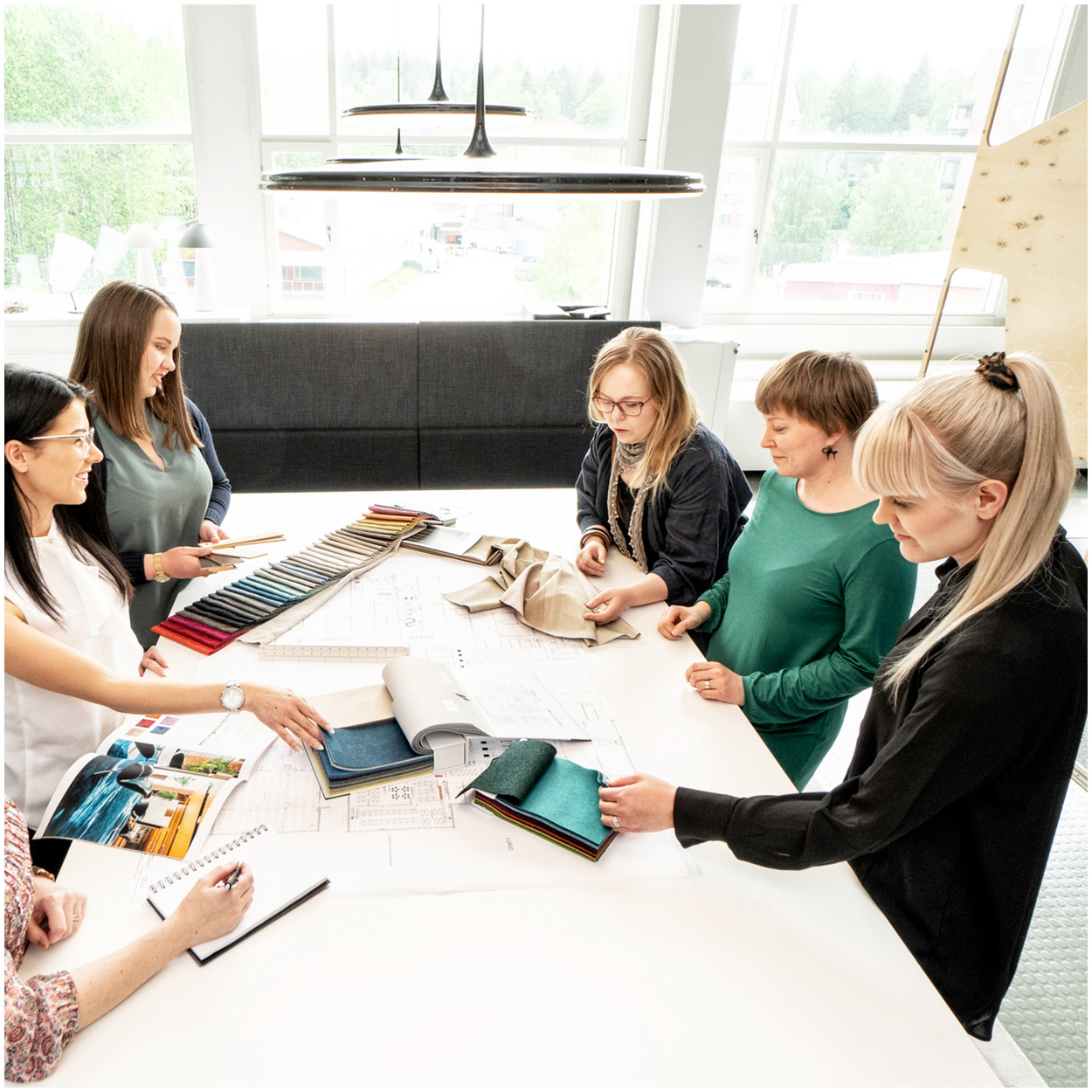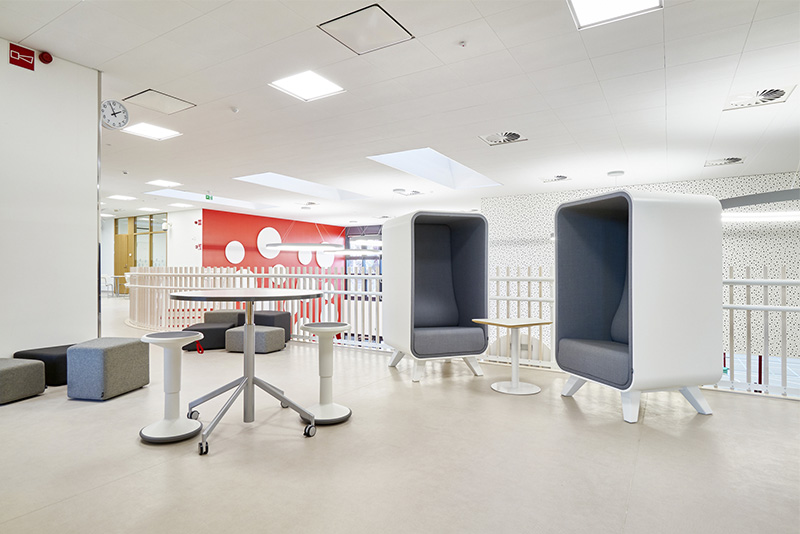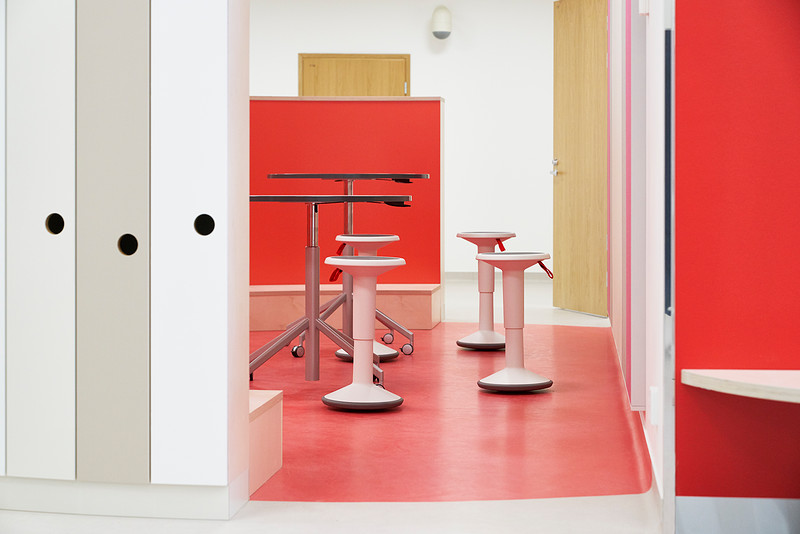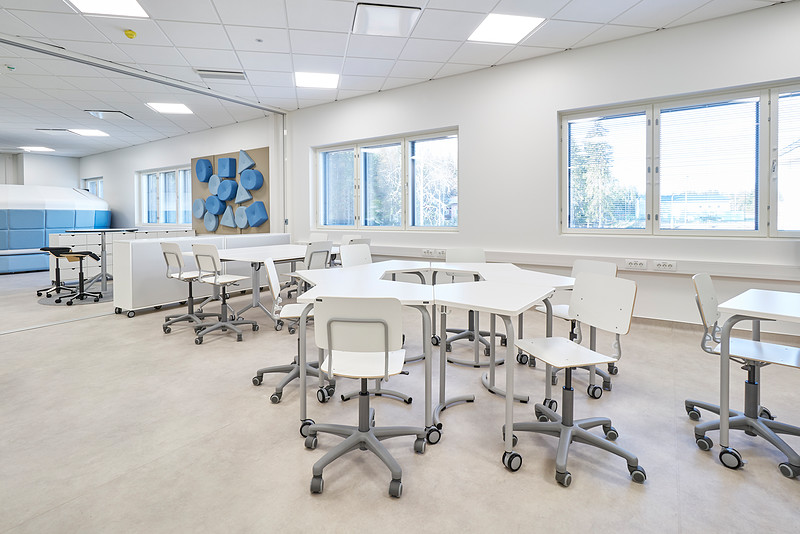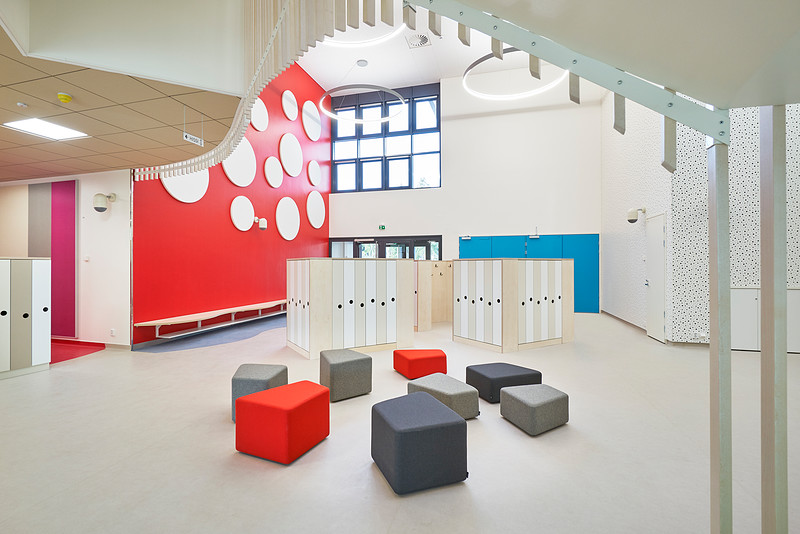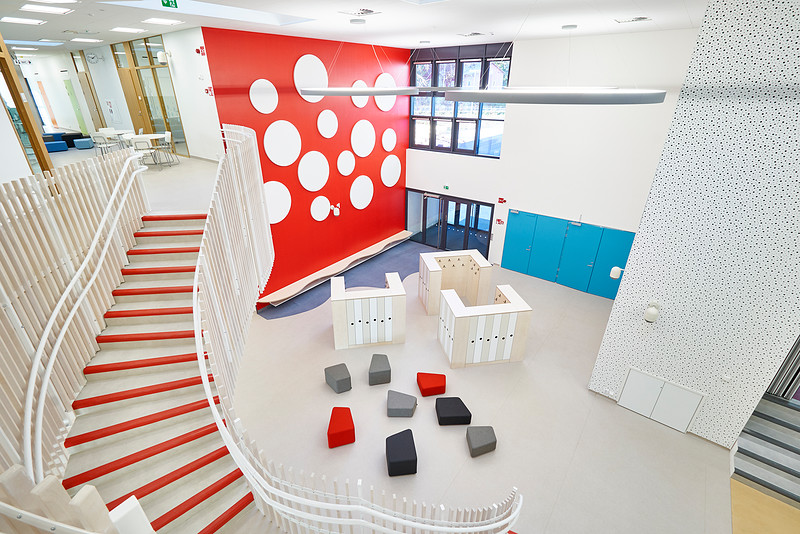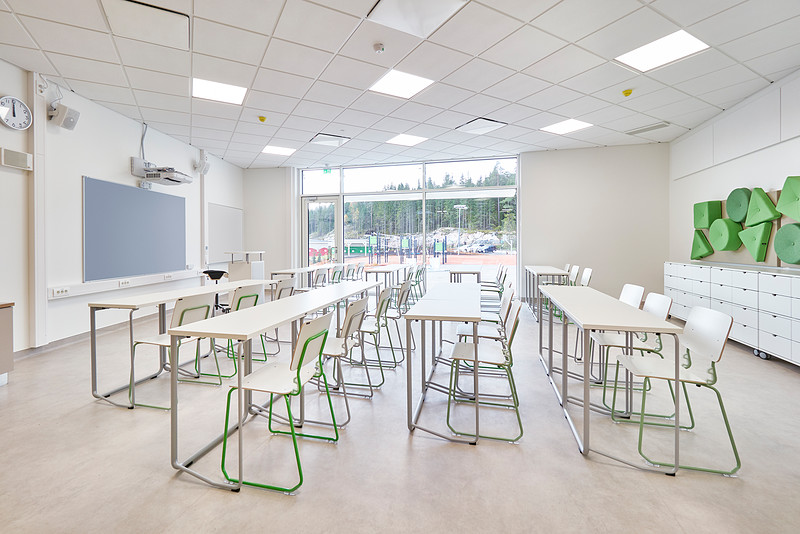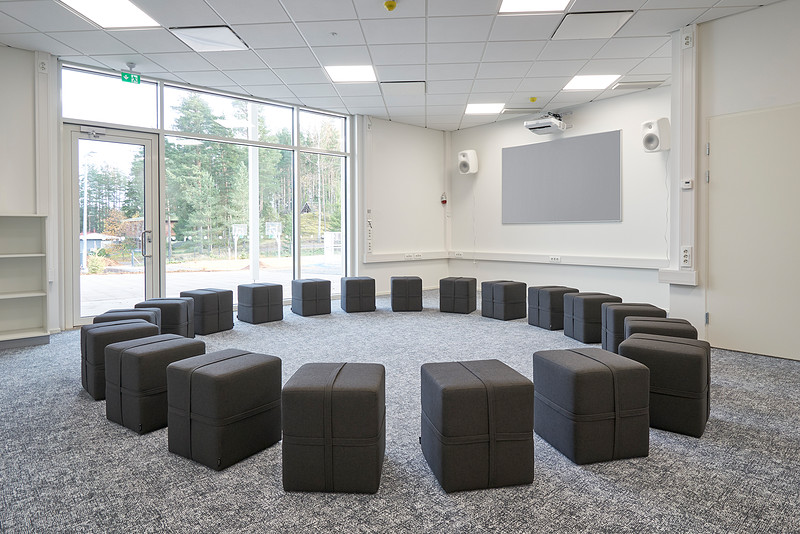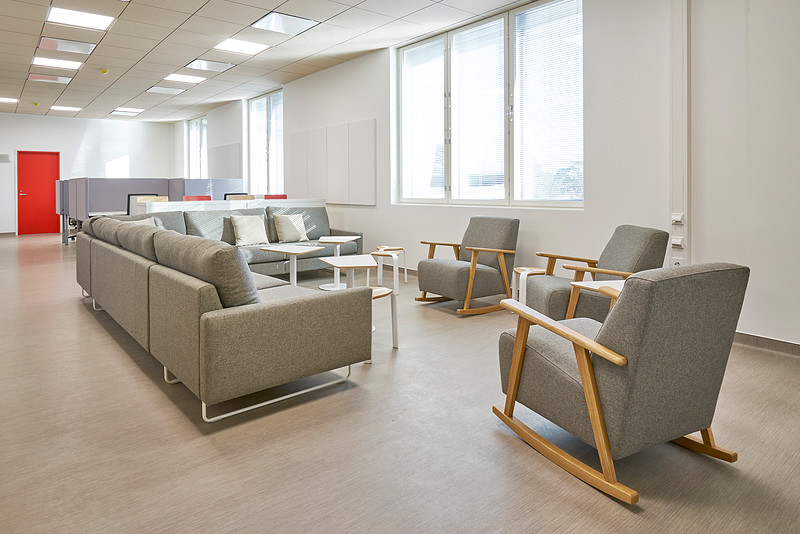
Case Study
Antimicrobial vs. Non-Antimicrobial Classroom
The school environment is a typical example of an area where diseases are easily spread, especially seasonally, such as with the common cold. This is particularly noticeable in schools, and the implications often extend to concern parents as well. Consequently, schools are prone to becoming hotspots for various infection chains, with both direct and indirect consequences. High absenteeism complicates students’ schoolwork, regardless of the reason for their absence.

School environments have many contact surfaces in heavy use by multiple users within the same day.
Studies indicate that 80% of infections are transmitted through touch, either directly or indirectly (Tierno, 2001). Given the prevalence of these high-touch surfaces, schools provide meaningful settings for field studies to examine microbial realities.
In 2018, ISKU conducted a collaborative study with Metropolia University of Applied Sciences, Teknos, and Abloy, focusing on microbial levels on various contact surfaces. The study took place in a primary school in Taatila, near Turku, Finland, recently furnished with ISKU’s furniture. The research involved two comparable classrooms, one equipped with ISKU+ antimicrobial furniture and the other with identical products but lacking the antimicrobial technology. Additionally, an antimicrobial Abloy Active door handle was installed, alongside its non-antimicrobial control version. All environmental factors, such as cleaning, utilization, and hand washing, were standardized to minimize variables. This approach allowed for the identification of differences on the specific contact surfaces under investigation.

The study was part of Anni Hyvönen’s laboratory science degree program at Metropolia. It specifically concentrated on contact surfaces, examining microbe amounts, microbe identification, microbiological cleanliness, and changes in pseudonymized absenteeism statistics (Hyvönen, 2018). This article focuses on microbe amounts and absenteeism within these classrooms.
The samples were collected in six different iterations using a 100 cm2 mold. The tested contact surfaces included the pupils’ chairs and tables, the teacher’s table, and the door handles of the classrooms. The pupils’ chair was tested on three different elements: the seat, back, and frame. All contact surfaces were tested and compared between the antimicrobial and conventional versions. The antimicrobial surfaces were all based on silver-ion technology.

On each of the contact surfaces, there were significantly fewer microbes on the antimicrobial version.
The results show a clear difference between the two classrooms. On each of the contact surfaces, there were significantly fewer microbes on the antimicrobial version. The average difference among the samples indicates that the antimicrobial technology can reduce the colony-forming units by 50%. Distinct sample comparisons can be observed in the bar chart.

Reducing absenteeism by half can be considered very promising, as it has the potential to impact overall well-being. Additionally, influence learning outcomes.
The absenteeism statistics showed similar results in favor of the antimicrobial classroom. Specifically, there were 165 sick leaves in the conventional classroom and 79 sick leaves in the antimicrobial classroom, resulting in a staggering 52% difference between the two. Reducing absenteeism by half can be considered very promising, as it has the potential to impact overall well-being but why not learning results as well.

